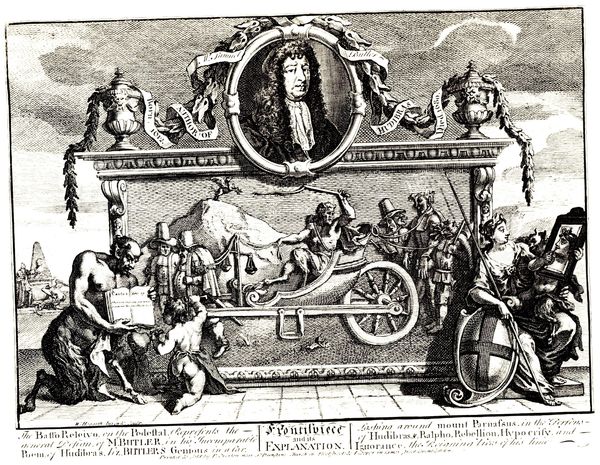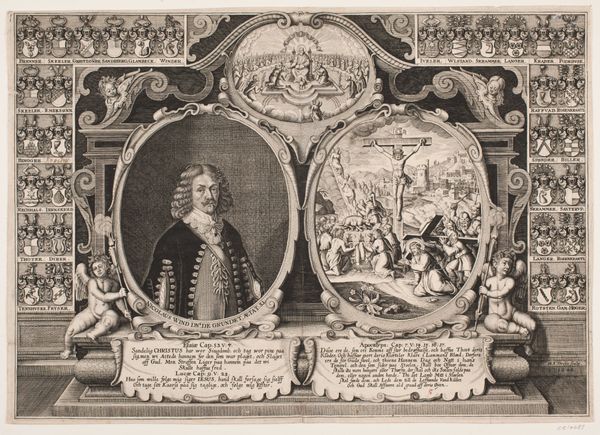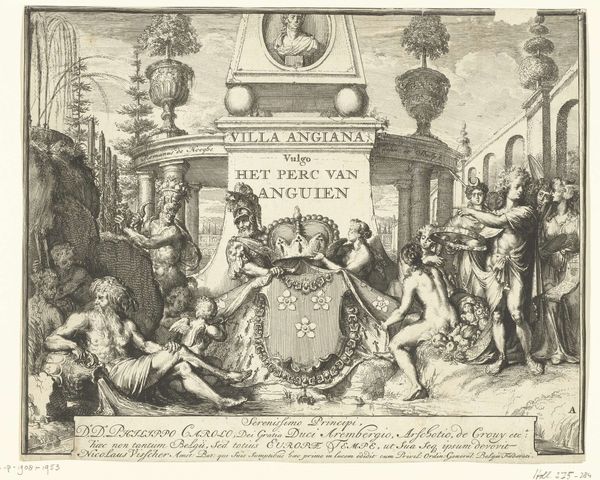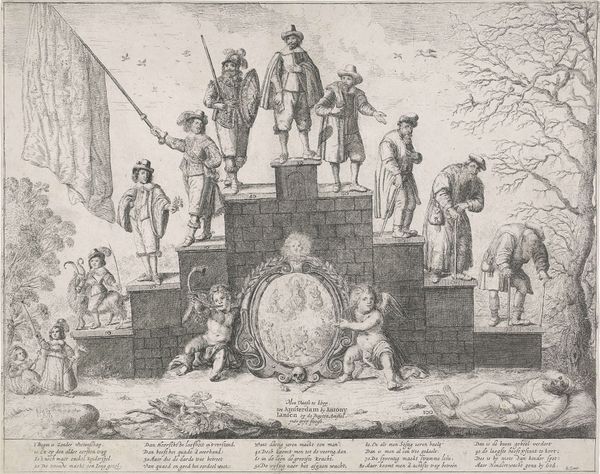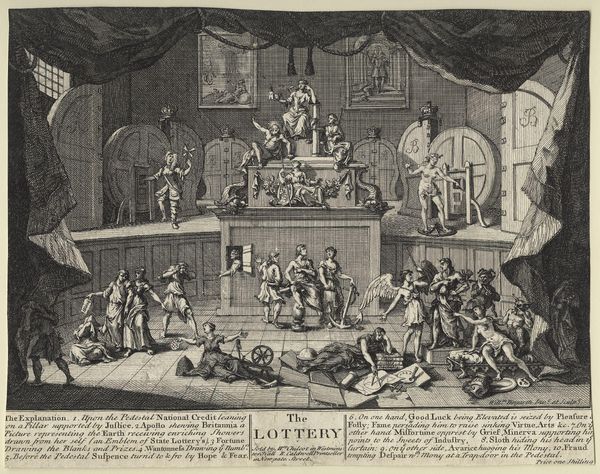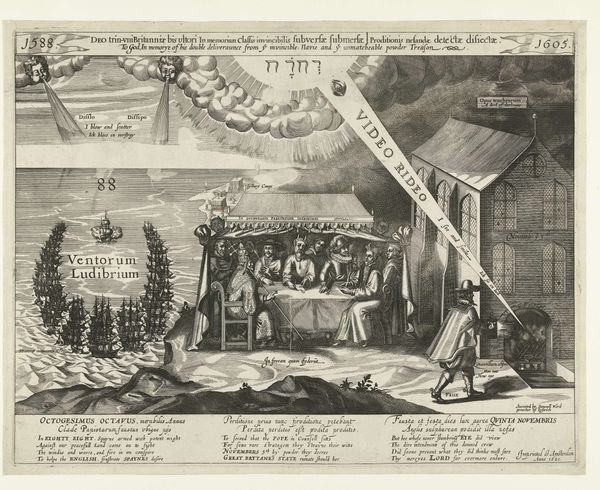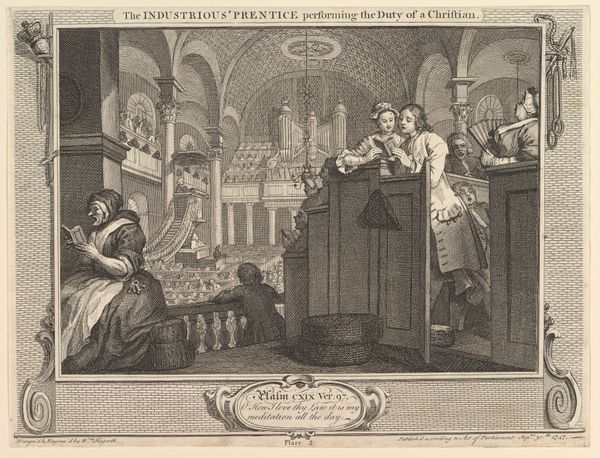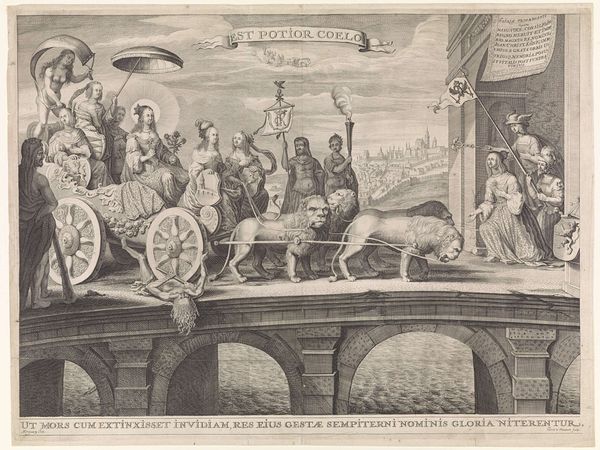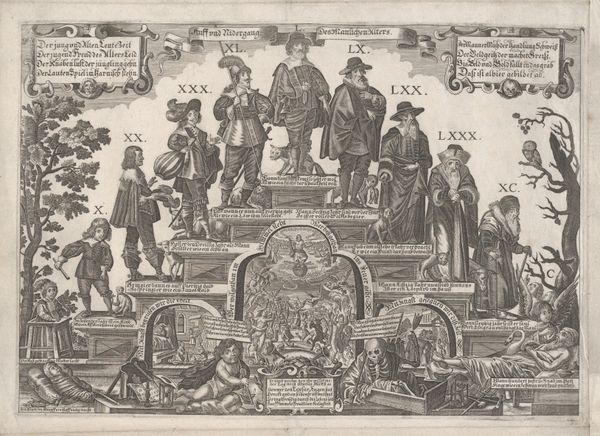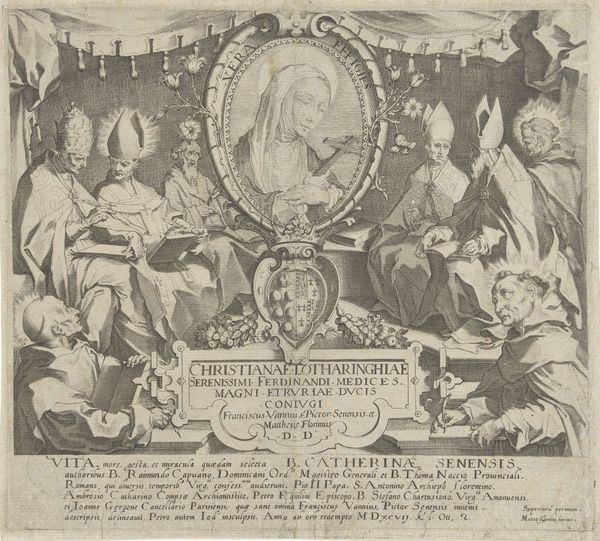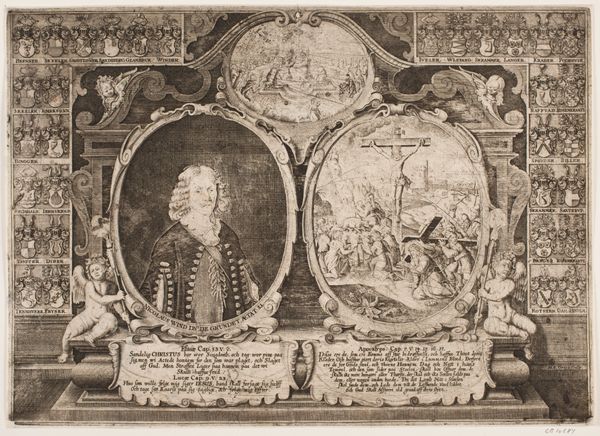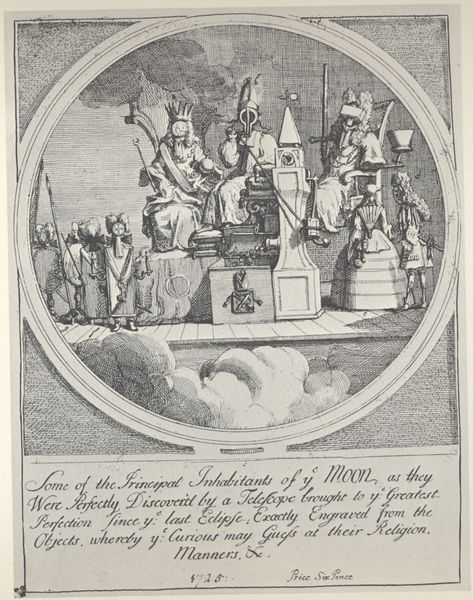
The Frontispiece and Its Explanation (Plate 1: Illustrations to Samuel Butler's Hudibras) 1725 - 1730
0:00
0:00
drawing, print, engraving
#
portrait
#
drawing
#
baroque
# print
#
figuration
#
men
#
line
#
history-painting
#
engraving
Dimensions: Plate: 7 3/4 x 9 1/2 in. (19.7 x 24.2 cm) Sheet: 8 1/8 x 10 15/16 in. (20.7 x 27.8 cm)
Copyright: Public Domain
Editor: So, this is William Hogarth's "The Frontispiece and Its Explanation (Plate 1: Illustrations to Samuel Butler's Hudibras)," created sometime between 1725 and 1730. It’s an engraving, and what strikes me immediately is how packed with detail it is, almost like a political cartoon. What's your read on it? Curator: It's a brilliant example of Hogarth using visual satire to engage with the political and social landscape of his time. Think about what “frontispiece” signifies – it's the entry point, the framing for Samuel Butler's poem. Hogarth uses that space to offer a commentary. Notice the figures. Editor: I see Britannia, but who are the others, and what do they represent? Curator: Consider the historical context. "Hudibras" satirized the Puritan movement during the English Civil War. Hogarth is extending that critique, likely engaging with ongoing power struggles. The characters are not just figures but embodiments of ideologies. What statements do you think he’s making through Britannia and the satyr in contrast to those being drawn around “Parnassus”? What societal tensions do you see reflected in this engraving, given its publication date? Editor: I guess it's about questioning authority and exposing hypocrisy. Britannia looks so... defeated. The poem itself, if the engraving is anything to go by, probably sparked quite a bit of debate. So the artist's not just illustrating a poem; he's participating in a larger conversation about power and ideology. Curator: Precisely. Hogarth’s print serves as both advertisement and critical analysis. It positions art as a tool for social commentary, aligning it with debates surrounding governance and ethics. It goes beyond a simple illustration, challenging the viewer to engage critically with societal norms. Editor: It’s amazing to see how much can be communicated through what I initially perceived to be just a book illustration. Thanks for bringing the historical context to the forefront and making me see this piece with fresh eyes. Curator: My pleasure. Remember, every artwork is a product of its time, reflecting anxieties and aspirations, struggles and achievements. Considering those circumstances is the most important thing.
Comments
No comments
Be the first to comment and join the conversation on the ultimate creative platform.
